By: Thorsten Overgaard
The Real Deal
When the first Noctilux lens was made as a 50mm f/1.2 in 1966, it was the introduction of the most unique lenses made in the history of photography. Soon after it became an f/1.0 model, and in 2008, Leica broke their own speed of light record with an f/0.95 version.
By the end of 2017 Leica announced the first of what I presume to be a series of legendary Noctilux lenses outside the 50mm range: The first is the 75mm Noctiliux, which is the one I will write about today.
I've been using the 50mm Noctiliux-M ASPH f/0.95 for many years, which you can read about in this article,"Noctilux - King of the Night".

It's apparent from the first photos with strong back-light that the purple fringe
is no more, or is limited to very tiny lines in extreme conditions.
Leica M10 with Leica 75mm Noctilux-M ASPH f/1.25 FLE.
© 2018 Thorsten von Overgaard.
Taking Noctilux to a new Level
Conclusion: Beyond everything, and something you will discover within the first hour (or minutes) of taking on the 75mm Noctilux, is that the overall optical performance in extreme low-light lens design has taken a step up. The contrast of what is in focus has increased, giving the impression that the lens is much sharper.
The sense of micro details you can touch and feel (when in focus) is extreme. The clarity of colors is almost better than what you see with the eye (which only the 90mm APO and a few others perform). The out-of-focus areas have become smooth and silky - as much as you would think is possible for a Noctilux lens. Maybe almost too nice and silky.

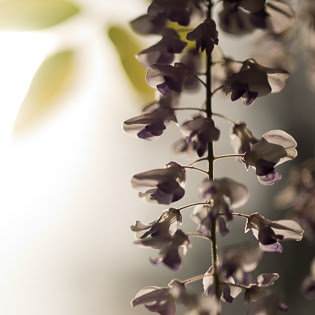
Textile of details you can touch. Silky out-of-focus areas
Most miraculous is the fact that purple fringing is gone! It makes you immediately think, "When does the next 50mm Noctilux come out?" (which is not promised or even rumored to happen). Most likely, a 35mm Noctilux is due next, then maybe in some years, a newly updated design of the 50mm Noctilux.
The demand on the user of this lens is how to work with the out-of-focus areas that have become eventless in the sense that they are smoky soft without sharp edges, as well as less contrasty than the in-focus areas of the frame. The 75mm Noctilux has become a civilized version of the 50mm Noctilux. A 50mm APO on steroids.

King of the Night
Noctilux means "light of the night" [from Latin 'nocturnus' of the night, and 'lux' light]. The Noctilux surpasses the speed of the human eye somewhat four times (which can see as wide as f/2.1 in the dark and f/8.3 in bright daylight).
Originally, when the first Noctilux lens was introduced in 1966, it was at a time where the race was about how to make a really fast lens that would be able to photograph in the dark with 100 ISO or 400 ISO film. Today we have 6400 ISO commonly on cameras, so even a f/2.8 lens could work for low light.
But with the wide open aperture comes the extremely narrow focus, and with that a dreamy bokeh (the shape and visual quality of the out-of-focus areas). But also a lens that balances so much on what is physically possible that it becomes a lens with which to create art. A lens that has such a different take on handling light that it opens up a world of new possibilities to make the everyday look like a fantasy.

Leica M10 with Leica 75mm Noctilux-M ASPH f/1.25.FLE
© 2018 Thorsten von Overgaard.
Size

The 75mm Noctilux is 1 mm larger in diameter
compared to the 50mm Noctilux.
compared to the 50mm Noctilux.
The Noctilux looks far larger in photos than it is in the hand, or on the camera. The same goes with the weight. Going from a 50mm Noctilux to the 75mm Noctilux is not a large step, though you do check your camera strap an extra time to make sure it's safe.
If you notice, the 75mm Noctilux uses 67mm filters, whereas the 50mm Noctilux uses 60mm filters. If you study the front of the two lenses, you'll realize that the tube is slimmer on the 75mm: That alone accounts for 5-6mm of the 7mm difference in filter size between the two.
It also means that filters are so far out from the 75mm lens opening that the filter frame doesn't influence the corners of the photo.
The "hole through" of a 50mm Noctilux f/0.95 is 53mm, and the "hole through" in a 75mm Noctilux at f/1.25 is 60mm in diameter.
Overall, it's a remarkable masterpiece that the lens designers have managed to pack that much glass and wide open aperture inside a barrel that measures just 1mm more in diameter (the 75mm Noctilux lens barrel is 74mm and the f/0.95 Noctilux is 73mm in diameter).
Leica M is a very compact lens design in any regard. Comparatively, the Leica 75mm Summicron-SL f/2.0 is 73mm in diameter, despite the fact that it's a 1.5 stop slower lens than the 75mm Noctilux. The Leica 35mm Summilux-TL f/1.4 is 70mm in diameter for a lens where the "hole through" is only 25mm.

LeicaM10 with Leica 75mm Noctilux-M ASPH f/1.25 FLE
© 2018 Thorsten von Overgaard.
The Nervous Photographer
I often meet people who are nervous about their Leica 50mm Noctilux and other Leica lenses. As in performance fear. Now I know what they face.
With the 75mm Noctilux, I felt performance fear. The bare touch of the lens… and you know it can perform, but can you get it to look as good as the lens was made to do? Will the face look as dreamily perfect and beautiful as the lens was intended to do? Will all my photos be slightly out of focus?
You can easily mess it up and take photos that are not perfect. If you forget that it's light and aesthetics that you are aiming for, why, if a photo has nothing in it, it doesn't matter what lens you used. To make it shine, you must find beauty.

Leica M10 with Leica 75mm Noctilux-M ASPH f/1.25 FLE
© 2018 Thorsten von Overgaard.
The secret to making the Noctilux work
Look for the magic of light, and take plenty of photographs. That's how you do it. Taking a new camera or lens out into the garden, or in a hallway in the evening when you first have it... it's seldom going to create masterpieces.
You need to take a good long walk for a reasonable chance of getting something that is actually photogenic. Don't take five photos. Take two hundred.
What you will likely realize is that some scenes just aren’t going to look great, no matter what you do. But others will. When the light is right, and the subject is right, it is actually possible to make magic. Without a subject, and without great light, nothing great will come out of it.
I make it a point that when I am learning a new camera or a new lens, I seek things that don't move fast. If they stay in place, I can examine my result, change settings and do it again. Once I’ve got the controls, I can go seek action and challenging focusing.
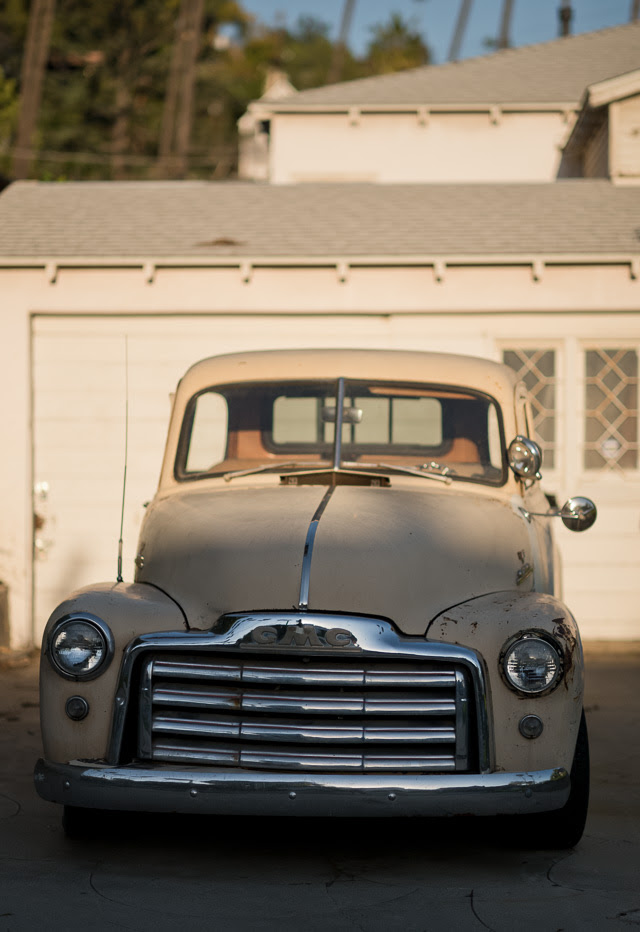
GMC.
Leica M10 with Leica 75mm Noctilux-M ASPH f/1.25 FLE
© 2018 Thorsten von Overgaard.
Focusing the Noctilux
I found it relatively easy to focus the 75mm Noctilux with the rangefinder the first time I tried. I didn't have an EVF with me, so the choice was easy. I had to get the focus right, and I did.
The basics of focusing with a rangefinder are that the viewfinder must be clean on the back and front, and that the focusing eye must be clean.
Next thing, you must know that if you haven’t got contrast, you can't focus. You need contrasty lines and edges to match in the rangefinder. It just isn't possible to match something that isn't there to see, such as for example a dark edge on a dark surface.

Leica M10 with Leica 75mm Noctilux-M ASPH f/1.25 FLE
© 2018 Thorsten von Overgaard.
The secret sauce to focusing with a rangefinder is: be sloppy! Focus like you know how to do it, be reckless about it. The harder you try, the harder it gets.
It means that you turn the focus ring (usually clockwise, as seen from behind the camera), and the moment the focus matches, take the photo. Then either move slightly back and forth with the body until you see that it matches again, then take another photo. Or, turn the focusing ring counter-clockwise back, then clockwise again until you see it matches, then take the photo.

Leica M10 with Leica 75mm Noctilux-M ASPH f/1.25 FLE
© 2018 Thorsten von Overgaard.
Don't turn the focusing ring back and forth to "nail the focus" or "test where the most focus is", because it's not an old safe that will open magically when you hit the right combination. Trust what you see, and when you see that the focus matches, press the shutter.
The result of this will likely be that some photos will be in focus, and some won't. But you just need one that is in focus, and that's why you may take a few to make sure you get it. Don't think that it's supposed to always work with just one single photo, and that if you can't do that, you have failed the test to enter the Leica Cult.
Here's how it works: You put on the EVF to get a Live View of the scene, and as you focus, the EVF 10X's the view so you can really nail the focus. Then you take the picture. Ah, this is the way to make sure you don't mess up this focusing thing, you think.
What do you know? Some times that works, some times that doesn't work. "That's strange", you think. "I really have no talent for this manual focusing".

Leica M10 with Leica 75mm Noctilux-M ASPH f/1.25 FLE
© 2018 Thorsten von Overgaard.
Stop blaming yourself. Take some more photos instead! What happens is that you focus, and before you take the photo, the subject moves, or you do, or you accidentally turn the focusing ring a tad as you take the photo. It doesn't really matter what it is, but that's the way it is. To make sure you get one or two that are as much in focus as intended, you take a few and re-focus for each.
You don't refocus, take the photo, then check the screen of the camera. No, you focus, take the photo, refocus and take another one.

Leica M10 with Leica 75mm Noctilux-M ASPH f/1.25 FLE
© 2018 Thorsten von Overgaard.
Never check that screen for other than the exposure. Even when it is really sharp, it doesn't look as sharp on the screen. And often when it looks really sharp on the screen, it isn't (but is just high contrast that makes the picture on the screen look really crisp).
Let's repeat: Be sloppy. Focus, take a photo, re-focus and take another. Keep doing just that.
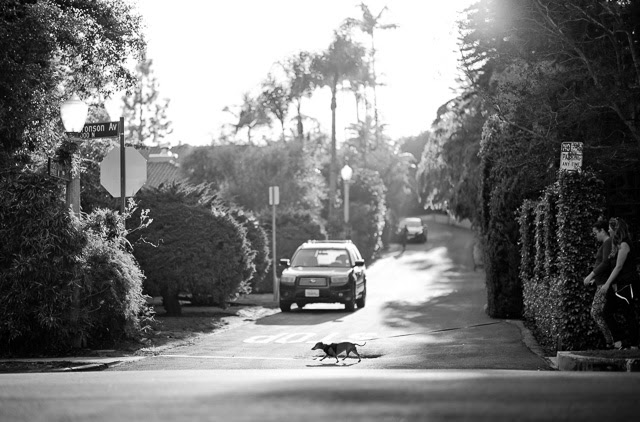
Leica M10 with Leica 75mm Noctilux-M ASPH f/1.25 FLE
© 2018 Thorsten von Overgaard.
When I was doing a workshop in New York and we were sitting and editing, Lars from Sweden stands behind my screen, and he says "Man, I wish I could get my Noctilux in focus as you can". I told him what was true, which is, "That's because you only see the ones that are in focus".
By the way, the Noctilux is not about focusing. It's about how dreamy can you make it without losing touch.

Leica M10 with Leica 75mm Noctilux-M ASPH f/1.25 FLE
© 2018 Thorsten von Overgaard.
Using EVF: Turn Off the Red Outline (Focus Peaking)
If you use an EVF with a lens with narrow depth of field (which is basically all f/1.4 and f/1.25 and f/0.95 lenses), you likely miss the real focus if you have turned on Focus Peaking, which is the red outline that supposedly shows when you hit focus.
The focus aid works by contrast, so when there is high contrast, there is a red outline. If there is no high contrast, the red outline will never appear.
The reason I turn off the red outline is that it disturbs the focus. I cannot see the thing that is supposed to be in focus with red lines over it. And with narrow focus, the red outline will show up before you have actually gotten 100% focus.

Leica Gallery Los Angeles.
Leica M10 with Leica 75mm Noctilux-M ASPH f/1.25 FLE
© 2018 Thorsten von Overgaard.
If you put on a "simple lens" as the Leica 28mm Summilux f/1.4, you will be able to easily notice that the red outline turns on way before you get the actual focus: You focus on a person sitting by a table at an outdoor restaurant, and now the person, the wall behind and the cars in front of the restaurant lights up with red outline.
It isn't that it doesn't work or is extremely inaccurate, it's just that you can much easier see in the EVF whether something is in focus or not - by simply looking at it.
Turn on your eyes instead of obeying a piece of electronics.
This is very true for the Leica M10 with the Visoflex EVF 020, and also true for the less resolution EVF-2 on the Leica M240 and Leica M 246.

Chateau Marmont.
Leica M10 with Leica 75mm Noctilux-M ASPH f/1.25 FLE
© Thorsten von Overgaard.
50mm APO on Steroids
The best description of the Leica 75mm Noctilux, is a 50mm APO on steroids. It's accurate, detailed, exercises extreme control with light, but unlike the 50 APO it has some bad-boy qualities. The 75mm Noctilux is walking on a thin line between being as perfect as the 50mm APO and being reckless. Without losing any of the perfection.

Leica M10 with Leica 75mm Noctilux-M ASPH f/1.25 FLE
© 2018 Thorsten von Overgaard.
The perfection is almost breathtaking in the 75mm Noctilux, at least on paper. In any low-light lens that you use wide open, the term "corner sharpness" is almost a joke. Who cares what's going on in the corners of the lens when all you want is selective focus on the main subject, and as much bokeh and out-of-focus for the rest?
Yet, the 75mm Noctilux boasts an even performance across the full field, to even "the most extreme corners" of the image field. While it might not be visible very often, it sets a standard for the lens. The designer has taken such extreme care to control all factors that it is not just the center of the lens that is great, but all of the lens.

Leica M10 with Leica 75mm Noctilux-M ASPH f/1.25 FLE
© 2018 Thorsten von Overgaard.
When we talk f/1.25, that's quite an accomplishment. An f/1.25 lens is not just twice as hard to control in optical design as an f/2.0, it's ten to twenty times more difficult. In other words, it requires ten to twenty times more precise design and assembly.
So much glory for the lens designers. Back behind the camera, we actually couldn't care less, because the aim for the photos made with a f/1.25 lens is to break the laws of physics. In the same way as a Formel 1 driver needs a perfect car to break the record, the photographer needs a perfect lens to tweak reality.

Leica M10 with Leica 75mm Noctilux-M ASPH f/1.25 FLE
© 2018 Thorsten von Overgaard.
If you want pretty, get the 50mm APO which can make excellent colors, micro details and all - but it can't play with depth of field like a Noctilux. It can't break the rules.
If you are all new to this and unfamiliar with the 50mm APO, "The World's Best 50mm" released in 2013, read my article on the 50mm APO and the intverview with the designer behind the APO and the Noctilux, Peter Karbe.

Leica M10 with Leica 75mm Noctilux-M ASPH f/1.25 FLE
© 2018 Thorsten von Overgaard.
Made to be used wide open at f/1.25
The lens designer Peter Karbe who made this Noctilux and most of the current lenses in the Leica M range, has said many times that aperture is for control of depth of field. Leica lenses are designed to be used wide open. If you want less open aperture, get a lens with less open aperture.

Leica M10 with Leica 75mm Noctilux-M ASPH f/1.25 FLE
© 2018 Thorsten von Overgaard.
As an example, Peter Karbe has stated that the only difference between the current 28mm lenses (image quality, sharpness and everything considered) is the f-stop. So, no matter if you buy the 28mm f/1.4, the f/2.0 or the f/2.8, you get the same image quality. The wider you go, the more light, and the more narrow focus you get.
Likewise, the 75mm Noctilux was designed to be used wide open. "Stopping down will increase the performance, but in most cases it is not necessary except for reasons of image composition with depth of field", as the manual of the 75mm Noctilux says.
Reasons of image composition would be when three people ask if you can take a photo of them together. In that case, the composition demands that you stop down so all three people will be in focus.

Leica M10 with Leica 75mm Noctilux-M ASPH f/1.25 FLE
© 2018 Thorsten von Overgaard.
Composition in the Third Dimension
Where most composition theory deals with composing a photograph as a two-dimensional concept (hight and width), starting to work with light-strong lenses wide open, you enter the art of composing in the third dimension. Now you have depth of field, selective focus, artistic bokeh, blurred out and exploding masses of undefineable light and an overall "unexplainable" visual array of effects to play with.
Then of course there's composition in the Fourth Dimension, but that's a story for another day and my upcoming Composition in Photography book.

Chateau Marmont.
Leica M10 with Leica 75mm Noctilux-M ASPH f/1.25 FLE
© Thorsten von Overgaard.
As soon as you start using the aperture for light control, the depth of field changes. Many admire the photographs made with dSLR cameras because of the blurred background. It looks cool, and it focuses the viewer on the subject in focus.
In the case of the 75mm Noctilux the out-of-focus background is to die for. If you don't think so, don't get one.

The lens wide open has selective focus; the background is out of focus.
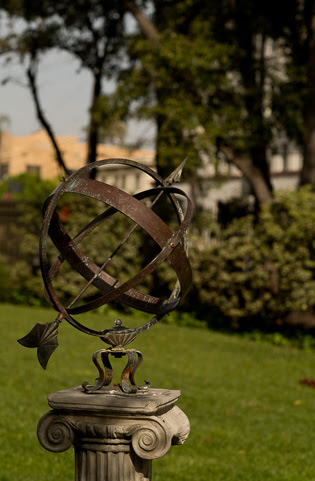
When you stop down the aperture to f/8, the background is also more in focus.


f/1.25 f/11
The necessary ND filter for the Noctilux
To be able to keep using the 75mm Noctilux wide open on a Leica M, you need a 3-stop ND filter. The minimum ISO of the Leica M10 is 100 ISO, and the maximum shutter speed is 1/4000 of a second. In sunshine, any lens that is wider open than f/2.0 will overexpose. On a Leica M240 with a base ISO of 200, the aperture has to be reduced to f/2.8. On a Leica M Monochrom where the base ISO is 320, the lens has to be stopped down to f/3.4.
(On a Leica SL, Leica CL and Leica TL2, the shutter goes to much faster speeds (thanks to an electronic shutter), making the need for ND filters unnecessary even in sunshine).

How to make believe the f/1.25 lens is an f/3.4 lens, even it is still wide open f/1.25 aperture:
Add a 3-stop "X4-ND" filter from Breakthrough Photography.
To reduce the light going through the lens, you need an ND filter. ND stands for Neutral Density, so it's neutral. It doesn't add contrast, it doesn't change colors. It only reduces the strength of the light. The 67mm 3-stop ND filter from Breakthrough Photography ($149) will fit the 75mm Noctilux and reduce the amount of light 3 stops, which equals f/3.4.
In the case of the Leica M Monochrom, you might want to consider getting Leica's ND-filter, which is 4-stop. Thus you won't be balancing on the edge of over-exposure in sunshine at the 320 ISO.
My preference is the Breakthrough Photography "X4-ND" filters because they are the best filters made. Period. On the Leica M10, I will set the ISO to 200 when using the ND filter. When on a walkabout in sunshine, you also encounter shade, and you want as fast exposure as possible in the shade. 200 ISO works well with the "f/3.4" of the lens in sunshine, and it prevents slow shutter speeds when working in the shade.
On a normal day the M10 with this setup will be 1/4000 in sunshine and 1/250 - 1/750 in shade.
Getting darker ND filters than 3-stop and 4-stop is a bad idea. In sunshine it makes no difference, but in the shade you will suddenly find yourself working at 1/30th and 1/60th second shutter speeds, creating motion blur and camera shake.

The 3-stop ND-filter reduces the light going through the lens 3 stops,
so wide open, when the lens is in fact at f/1.25, it will take light in as if it was at f/3.4
while the lens remains the narrow depth of field of f/1.25.
I recommend "X4-ND" 3-stop filters from Breakthrough Photography.
so wide open, when the lens is in fact at f/1.25, it will take light in as if it was at f/3.4
while the lens remains the narrow depth of field of f/1.25.
I recommend "X4-ND" 3-stop filters from Breakthrough Photography.
As lens design improves
What's the difference between old and new Leica lenses?
Generally speaking, the newer a Leica lens, the more resolution (as in details recorded per mm), contrast, clarity and correct colors. Newer lenses use optical design and (mainly) lens coatings to control reflections and (skin) colors.
In high fidelity, watches, cars and other things most would expect that the older the item, the better the quality and the more care that went into the details. That's true for much manufacturing, but not in the case of Leica lenses. Unlike most brands, Leica will deploy the most expensive raw materials they see fit, extreme care in hand-assembled production, and an overall extreme reach for the highest quality, despite the costs.
The extreme quality is a Leica tradition since 100 years ago, only changed for the better by the improved precision in production, more accurate precision-assembling, grinding of the optics, and computer-aided design. Many of the optical qualities are the same: The idea of how the image must look is the same, but as we have moved forward from 100 years until today, the overall precision has improved.
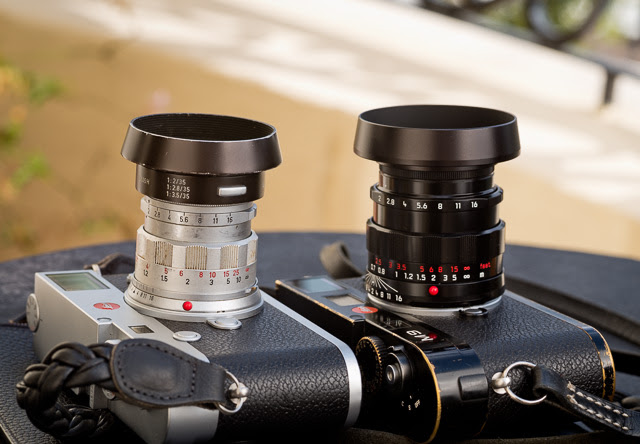
So much to love: Two extremes that are in family and have many of the same qualities.
The $400 - $1,800 50mm "Rigid" from 1956-68 (left), and
"The Worlds Best 50mm Lens" from 2013,
the APO-Summicron (right) in a limited "LHSA" edition for $9.595.
If you compare the two lenses shown above, the 50mm "Rigid" from 1960's and "The World’s Best 50mm" from 2013, the fundamental aesthetical qualities are much the same. But in comparison, the newer lens has extreme micro-details and extreme control of light, resulting in clarity, correct colors and higher contrast (even with strong backlight). If you imagine a photo taken with a cheap plastic lens, all highlights will have a strong halo. With a quality lens, there is no halo - no overflow of light. Light is light, shadow is shadow. Period.

With an old 50mm "Rigid" from 1960's you can get flare
such as this by permitting relatively little backlight in.
such as this by permitting relatively little backlight in.
© Thorsten von Overgaard.

With the 75mm Noctilux the optical design is so controlled,
you get this when having the sun going straight into the lens.
The 50mm APO is the same.
you get this when having the sun going straight into the lens.
The 50mm APO is the same.
© Thorsten von Overgaard.

If you want flare with modern lenses,
you add it later (as in the movie "gravity")

Even between extreme lenses like the 50mm Noctilux f/0.95 from 2008 and the 75mm Noctilux-M f/1.25 from 2018, the extremely well-made optical design of 2008 has improved ten years forward to 2018: Tighter control with light, colors and contrast (see chair detail below).
Almost all Leica lenses have the "Leica look", which may be described as "soft, detailed and alive". They further have some qualities that defy words. You recognize it when you see it.
This philosophy behind the special Leica look is described by lens designer Peter Karbe in my interview with him on the 50mm APO lens here.


75mm Noctilux 50mm Noctliux
In this detail you may sense the overall tightness of the 75mm Noctilux's control of light in a scene with high contrast and backlight.

How to park a Noctilux 75mm lens.
Leica M10 with Leica 50mm APO-Summicron-M ASPH f/2.0 LHSA.
© 2018 Thorsten von Overgaard.
© 2018 Thorsten von Overgaard.
75mm Summilux vs 75mm Noctilux
While I haven't made direct comparisons between the 75mm Summilux f/1.4 and the 75mm Noctilux f/1.25 (and have no intention to do so), the difference in look is obvious even from the small review screen of the camera already when you have taken the first photo with the 75mm Noctilux.
The contrast of the 75mm Noctilux (2018) is way above the Summilux (1980-2007). There are many differences between a 38-year old excellent lens design compared to a current excellent lens design. The control of light (flare and ghosting), the accuracy of colors (the glass doesn't add warm or cold tones to the colors, thanks to advanced glass types and advanced coatings to control colors and reduce reflections), the clarity of colors by control of light rays (that makes you suspect it's an APO lens design), the application of modern lens design where Peter Karbe and his team designs the look towards high contrast in the focal plane and "fast falling contrast" in the out-of-focus areas.
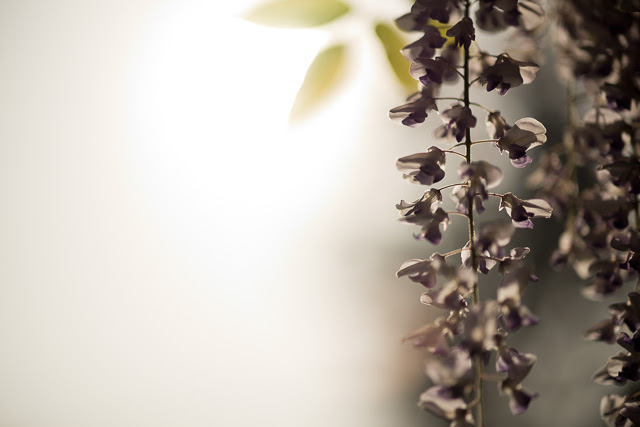
Straight into the sun.
Not many lenses can do this.
Leica M10 with Leica 75mm Noctilux-M ASPH f/1.25 FLE
Leica M10 with Leica 75mm Noctilux-M ASPH f/1.25 FLE
© 2018 Thorsten von Overgaard.
The 75mm Summilux is a great lens for color photography when not disturbed by ghosting or flare light, and it is a beautiful lens for monochrom photography where the "soft and rich in details" look seems to feed the Leica M Monochrom with more tonality than you can explain.
Both lenses, the 75mm Noctilux and the 38-year older 75 Summilux have the richness in details that makes you wonder how this is possible. The face being photographed by either lens will love the detailed skin that looks healthy and alive, while the "soft" look doesn't age the face unnecessarily (which an over-sharpened look will). Leica lenses give you the skin details (texture), but not the wrinkles (lines), so to speak.

While I haven't made direct comparisons between the 75mm Summilux f/1.4 and
the 75mm Noctilux f/1.25, this comparison of the 75mm Summilux and
the 75mm Summicron SL illustrates the effect of high contrast in the focus area,
and fast downfall in the out-of-focus area in front and behind the subject in focus.
the 75mm Noctilux f/1.25, this comparison of the 75mm Summilux and
the 75mm Summicron SL illustrates the effect of high contrast in the focus area,
and fast downfall in the out-of-focus area in front and behind the subject in focus.

Isolated not only by depth of field but also high contract in focus and fast falling
contrast in out of focus areas. Leica M10 with Leica 75mm Noctilux-M ASPH f/1.25 FLE
contrast in out of focus areas. Leica M10 with Leica 75mm Noctilux-M ASPH f/1.25 FLE
© 2018 Thorsten von Overgaard.
What is ghosting and flare?
Ghosting = Secondary light or image from internal reflections between (and within) lens elements inside a lens. The reflected light may not always be in focus, so overall it looks like a "milked out" image. A subject in focus has brightened patches in front of it that come from reflections inside the lens. the most elementary look of ghosting is when you look in a rear-view mirror in a car at night and you see doubles of the headlights behind you (a strong one and a weaker one), because the headlights are reflected in a layer of clear glass on top of the mirror glass.



Degrees of ghosting from strong sunlight entering from outside the frame.
To the right the outside light has been shielded with a shade.
Flare = Burst of light. Internal reflections between (and within) lens elements inside a lens. Mostly, flare has a characteristic "space travel" look to it, making it cool. Particularly in older lenses with less or no coating of the glass surfaces to suppress this, it can be a really cool effect. In newer lens designs, the coatings and overall design try to suppress flare and any reflections to a degree, so that there is seldom any flare to be picked up (moving the lens to pick up a strong sunbeam), but instead a "milking out" (or "ghosting") of a circular area of the frame; meaning simply overexposed without any flare-looking flares.


The camera moved slightly to avoid the flare.

Mel's Drive-In on Sunset Boulevard. Leica M10 with Leica 75mm Noctilux-M ASPH f/1.25 FLE
© 2018 Thorsten von Overgaard.
Breaking the perfection
I always look to see how a lens handles light coming straight into it. It's my way of playing with it and learning how to create something unique with it. I always do that with lenses, it's my way of learning how they work with extremes.

Traffic at night on the highway. It's extreme how well the Noctilux holds its ground
on the shadow with no overflow. Only the out-of-focus areas show some effects
I might find useful for something.
3200 ISO. Leica M10 with Leica 75mm Noctilux-M ASPH f/1.25 FLE
on the shadow with no overflow. Only the out-of-focus areas show some effects
I might find useful for something.
3200 ISO. Leica M10 with Leica 75mm Noctilux-M ASPH f/1.25 FLE
© 2018 Thorsten von Overgaard.

In the focus area there is only perfection.

In the out-of-focus area there's some effect
that might be useful one day.
that might be useful one day.
Conclusion: Useless or necessary?
When I first heard of the 75mm Noctilux, I was certain I wanted to have one, try it and not keep it.
Now I'm not that certain anymore. I think it's a keeper.
The f/1.25 of the lens (rather than f/0.95) to begin with, seemed a "half solution", but in practical use and results, it's a well-thought step. The size of the lens and the final look of the images makes sense when you have used it for a while.
A 75mm f/0.95 would have been revolutionary, but extremely heavy and something like 95 mm in diameter.
The results of the 50mm Noctilux and the 75mm Noctilux are similar. There seems little sense in using both, one of them will win and it could be the 75mm for image quality, or the 50mm for being more compact and for being able to work closer to the subject. We'll have to figure that one out on our own.
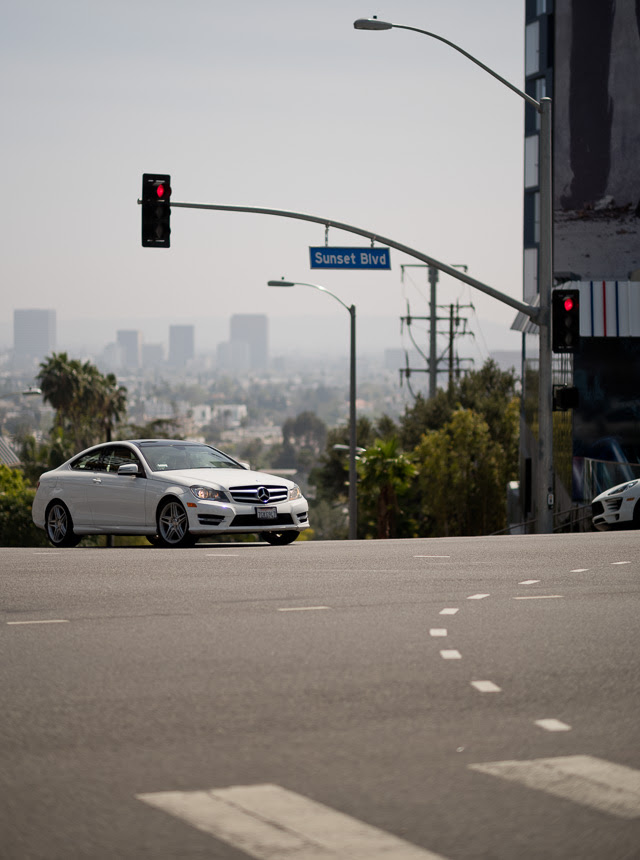
Sunset Strip with a view to downtown LA.
Leica M10 with Leica 75mm Noctilux-M ASPH f/1.25 FLE
Leica M10 with Leica 75mm Noctilux-M ASPH f/1.25 FLE
© 2018 Thorsten von Overgaard.
Waiting time for the 75mm Noctilux
Two days after I had found my 75mm Notilux on the website of PopFlashin California (with 3-year passport warranty), I got an email from Leica Salzburgthat they had gotten one for me too (which they might still have if you are fast). While the wailing list is very long in many places, there are 75mm Noctilux being shipped, so you’ve got to find the stores that don't have a 5-person, or 30-person or 150-person waiting list.
The bottleneck in the 75mm Noctilux, the 50mm Noctilux and 50mm APO is not just production capacity. These three lenses, along with the Cine Lenses, are hand-assembled, tested, re-adjusted and tested endlessly for hours by a handful of specialists in Wetzlar who can fine-tune a lens to extreme tolerances.
Leica lenses are in any case exclusive, expensive and from a small factory. With the 75mm Noctilux, we likely face the same scenario as when the 0.95 Noctilux was introduced in 2008, which means waiting lists and small drips of lenses during the first year or two.

Here's how Cine Lenses are made.
The lens is tested by projecting a test slide onto a wall and checking its performance with a loupe!
Then it goes back for more fine-tuning before it's tested again.
A Cine Lens takes about two days to tune in.
The lens is tested by projecting a test slide onto a wall and checking its performance with a loupe!
Then it goes back for more fine-tuning before it's tested again.
A Cine Lens takes about two days to tune in.
Leica M 240 with 28mm Summilux-M ASPH f/1.4.
© 2018 Thorsten von Overgaard

Leica M10 with Leica 75mm Noctilux-M ASPH f/1.25 FLE
© 2018 Thorsten von Overgaard.
Which camera for the 75mm Noctilux?
While the Leica SL does really well with Leica M lenses (and most likely better than the Leica M in the case of the 50mm APO-Summicron), the Leica CL and Leica TL don't handle Leica M lenses just as well as Leica M camera sensors.
I would say that the 75mm Noctilux-M ASPH f/1.25 is equally good on the Leica M and Leica SL, which are both full-frame.
On the Leica TL2 and Leica CL ... nah, I don't think so. The crop factor makes it onto a 115mm lens, and the sensor can't handle the image quality as well as the M and SL. If you're going to get a $12,500 lens, save the adapter and buy a Leica M or Leica SL for this lens.

Leica M-Adapter L for using Leica M lenses
on the Leica SL, Leica TL2 and Leica CL.
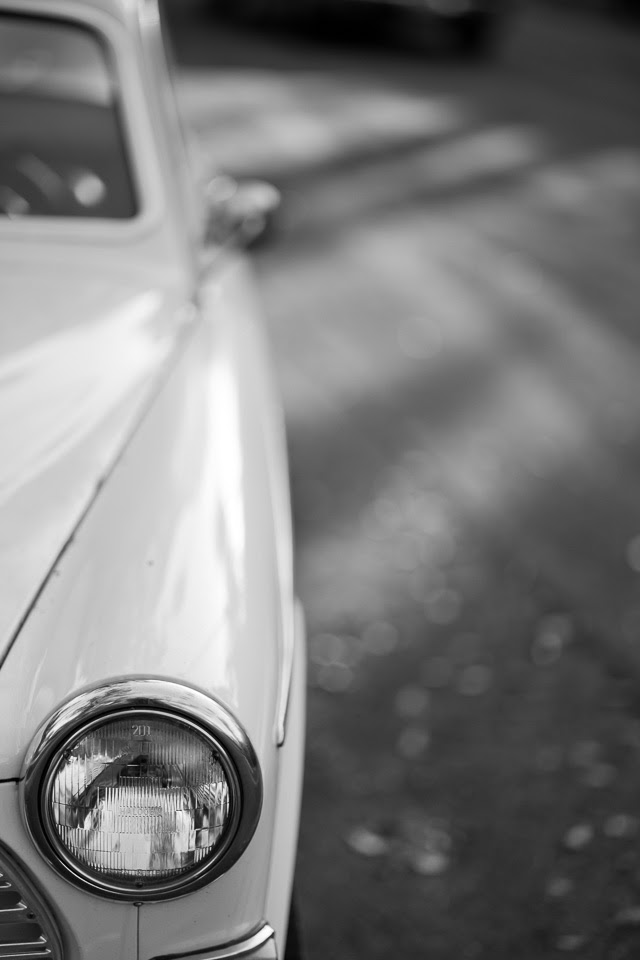
Leica M10 with Leica 75mm Noctilux-M ASPH f/1.25 FLE
© 2018 Thorsten von Overgaard.
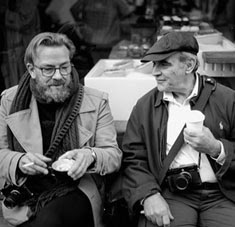 Thorsten von Overgaard by Robert Farrands.
Thorsten von Overgaard by Robert Farrands.Thorsten von Overgaard is a Danish writer and photographer, specializing in portrait photography and documentary photography, known for writings about photography and as an educator. Some photos are available as signed editions via galleries or online. For specific photography needs, contact Thorsten Overgaard via e-mail.
For other articles on this blog please click on Blog Archive in the column to the right
For other articles on this blog please click on Blog Archive in the column to the right
To comment or to read comments please scroll past the ads below.
All ads present items of interest to Leica owners.
_______________________________________________________________________
To comment or to read comments please scroll past the ads below.
All ads present items of interest to Leica owners.
_______________________________________________________________________
Buy vintage Leica cameras from America's premier Leica specialist
Buy vintage Leica cameras from
America's premier Leica specialist
Click on image to enlarge
Click on image to enlarge
Click on image to enlarge
Click on image to enlarge
Click on image to enlarge
Click on image to enlarge
















No comments:
Post a Comment